#starring Clark Gable and Myrna Loy
Explore tagged Tumblr posts
Text


Silver Screen magazine, March 1938
#money makers#clark gable#gary cooper#shirley temple#william powell#ginger rogers#fred astaire#robert taylor#bing crosby#myrna loy#jane withers#sonja henie#1930s#1938#studio system#mgm#silver screen#silver screen magazine#magazine#movie magazine#hollywood#old hollywood#classic hollywood#vintage hollywood#movie stars#stars
11 notes
·
View notes
Text
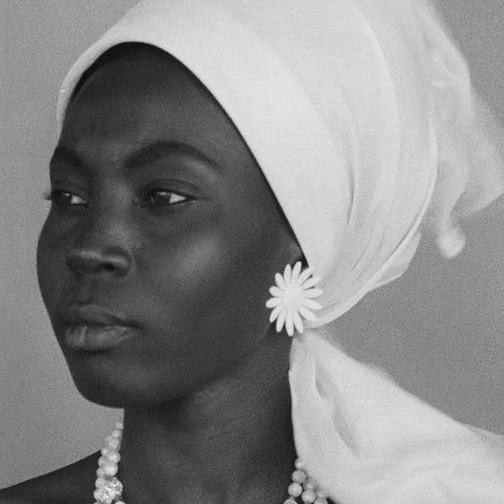
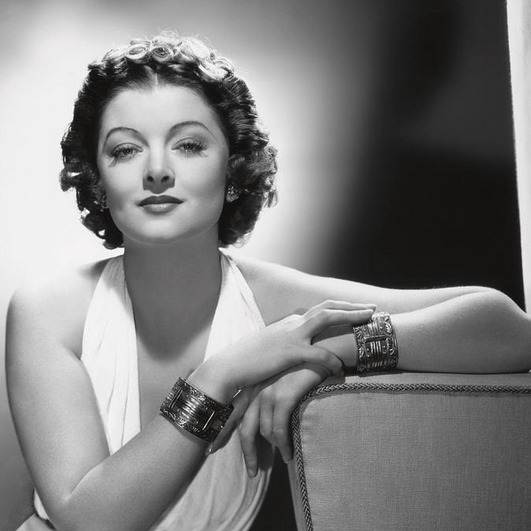
Propaganda
Mbissine Thérèse Diop (Black Girl)—She’s a Senegalese actress known for starring in Black Girl, one of the first African films to receive international attention/acclaim. So much of the movie relies on her ability to convey her character’s sense of isolation/loneliness, she’s so amazing, I really wish she had acted more. However, she just recently appeared in the film Cuties!
Myrna Loy (The Thin Man, Manhattan Melodrama, Mr Blandings Builds his Dream House)—Started out a slinky silent screen vamp. Became a screwball lead who had a blast drinking, being married to William Powell, solving mysteries, and taking her dog everywhere in the Thin Man Movies. Broke our hearts in The Best Years of Our Lives and played a string of dream wives. Remained hot the entire time. Decades of hotness.
This is round 3 of the tournament. All other polls in this bracket can be found here. Please reblog with further support of your beloved hot sexy vintage woman.
[additional propaganda submitted under the cut.]
Mbissine Thérèse Diop:
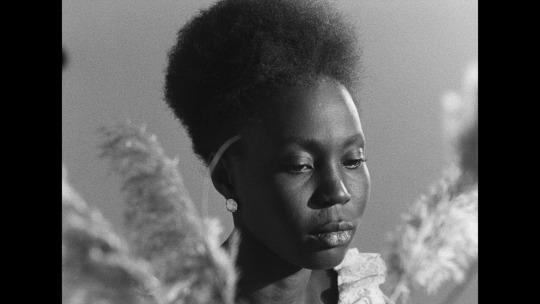

Myrna Loy:

Myrna Loy excelled at playing coy women, so common in screwball comedies in the 40s. She batted her lashes, and shrugged with grace, and made her costars look like foolish heels next to her. She charmed with sneaky elegance, well-placed pouting, and repartee. Besides, she was sultry AF.
While Myrna certainly looked hot in some her earlier vampy exotic bad girl roles, I think shes hottest when her comedic chops got to be displayed. Her dry wit, comedic timing, and subtle facial expressions make her the queen of deadpan snark.
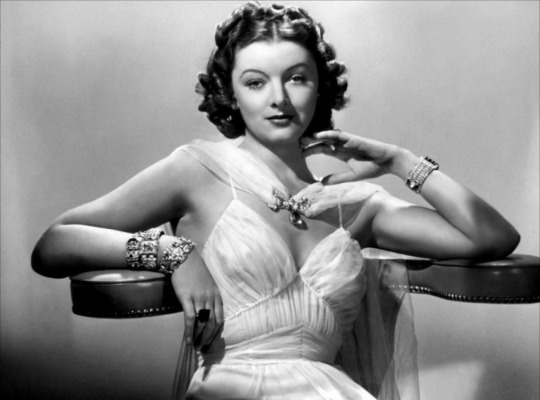
She's just very Mother
So beautiful and popular she was crowned Queen of the Movies in 1936, Myrna Loy was also an amazing actress. She's best remembered for The Thin Man and sequels, where she gets to show off her comedy skills, adding irresistible impish charm to her classic beauty and dancer's figure.
THE SASS
One of the few actresses who managed to successfully transition from silent to talkies, never won an Oscar but was at one time the highest paid woman in Hollywood. Advocated for better roles and pay for Black actors in the 1930s, so passionately anti-Nazi in the 40s she made Hitler's blacklist, spoke out against Joseph McCarthy during the Red Scare, and advocated for fair housing in the 1950s and 1960s, all while being hot as fuck opposite William Powell, Clark Gable, Cary Grant, Spencer Tracy and a whole galaxy of the Hot Vintage Men Poll all-stars.

Cute as a button with so much RIZZ! She and whatsisname in The Thin Man are relationship goals.
She was literally called the Queen of Hollywood! She is so sassy and funny in the whole Thin Man series. Absolutely hot in those, and who doesn’t love a woman who can laugh? She had the sultriest gaze and that style! Also before she was a star she sat as the model for an iconic statue for a school (representing “Fountain of Education”).
the glamour!! the banter!! the comedy!!

She's got this cute kinda scrunched up face AND shes funny AND shes got a bangin body.

273 notes
·
View notes
Text

Director John M Stahl studies the script on set of PARNELL (1937). The movie stars Clark Gable, Myrna Loy, Edna May Oliver, and Edmund Gwenn.
10 notes
·
View notes
Text
To The Film Industry in Crisis - Frank O'Hara
Not you, lean quarterlies and swarthy periodicals with your studious incursions toward the pomposity of ants, nor you, experimental theatre in which Emotive Fruition is wedding Poetic Insight perpetually, nor you, promenading Grand Opera, obvious as an ear (though you are close to my heart), but you, Motion Picture Industry, it’s you I love! In times of crisis, we must all decide again and again whom we love. And give credit where it’s due: not to my starched nurse, who taught me how to be bad and not bad rather than good (and has lately availed herself of this information), not to the Catholic Church which is at best an oversolemn introduction to cosmic entertainment, not to the American Legion, which hates everybody, but to you, glorious Silver Screen, tragic Technicolor, amorous Cinemascope, stretching Vistavision and startling Stereophonic Sound, with all your heavenly dimensions and reverberations and iconoclasms! To Richard Barthelmess as the 'tol’able’ boy barefoot and in pants, Jeanette MacDonald of the flaming hair and lips and long, long neck, Sue Carroll as she sits for eternity on the damaged fender of a car and smiles, Ginger Rogers with her pageboy bob like a sausage on her shuffling shoulders, peach-melba-voiced Fred Astaire of the feet, Eric von Stroheim, the seducer of mountain-climbers’ gasping spouses, the Tarzans, each and every one of you (I cannot bring myself to prefer Johnny Weissmuller to Lex Barker, I cannot!), Mae West in a furry sled, her bordello radiance and bland remarks, Rudolph Valentino of the moon, its crushing passions, and moonlike, too, the gentle Norma Shearer, Miriam Hopkins dropping her champagne glass off Joel McCrea’s yacht, and crying into the dappled sea, Clark Gable rescuing Gene Tierney from Russia and Allan Jones rescuing Kitty Carlisle from Harpo Marx, Cornel Wilde coughing blood on the piano keys while Merle Oberon berates, Marilyn Monroe in her little spike heels reeling through Niagara Falls, Joseph Cotten puzzling and Orson Welles puzzled and Dolores del Rio eating orchids for lunch and breaking mirrors, Gloria Swanson reclining, and Jean Harlow reclining and wiggling, and Alice Faye reclining and wiggling and singing, Myrna Loy being calm and wise, William Powell in his stunning urbanity, Elizabeth Taylor blossoming, yes, to you and to all you others, the great, the near-great, the featured, the extras who pass quickly and return in dreams saying your one or two lines, my love! Long may you illumine space with your marvellous appearances, delays and enunciations, and may the money of the world glitteringly cover you as you rest after a long day under the kleig lights with your faces in packs for our edification, the way the clouds come often at night but the heavens operate on the star system. It is a divine precedent you perpetuate! Roll on, reels of celluloid, as the great earth rolls on!
5 notes
·
View notes
Text
In this spectacular saga as radiant, thrilling, and beguiling as Hollywood itself, Adriana Trigiani takes us back to Tinsel Town’s golden age—an era as brutal as it was resplendent—and into the complex and glamorous world of a young actress hungry for fame and success. With meticulous, beautiful detail, Trigiani paints a rich, historical landscape of 1930s Los Angeles, where European and American artisans flocked to pursue the ultimate dream: to tell stories on the silver screen. The movie business is booming in 1935 when twenty-one-year-old Loretta Young meets thirty-four-year-old Clark Gable on the set of The Call of the Wild. Though he’s already married, Gable falls for the stunning and vivacious young actress instantly. Far from the glittering lights of Hollywood, Sister Alda Ducci has been forced to leave her convent and begin a new journey that leads her to Loretta. Becoming Miss Young’s assistant, the innocent and pious young Alda must navigate the wild terrain of Hollywood with fierce determination and a moral code that derives from her Italian roots. Over the course of decades, she and Loretta encounter scandal and adventure, choose love and passion, and forge an enduring bond of love and loyalty that will be put to the test when they eventually face the greatest obstacle of their lives. Anchored by Trigiani’s masterful storytelling that takes you on a worldwide ride of adventure from Hollywood to the shores of southern Italy, this mesmerizing epic is, at its heart, a luminous tale of the most cherished ties that bind. Brimming with larger-than-life characters both real and fictional—including stars Spencer Tracy, Myrna Loy, David Niven, Hattie McDaniel and more—it is it is the unforgettable story of one of cinema’s greatest love affairs during the golden age of American movie making.



#book: all the stars in heaven#author: adriana trigiani#genre: historical fiction#genre: romance#year: 2010s
1 note
·
View note
Text
History
July 22, 1934 - Bank robber John Dillinger (1902-1934) was shot and killed by FBI agents as he left Chicago's Biograph Movie Theater after watching the film Manhattan Melodrama starring Clark Gable and Myrna Loy. Dillinger was the first criminal labeled by the FBI as "Public Enemy No. 1." After spending nine years (1924-1933) in prison, Dillinger went on a deadly crime spree, traveling through the states of Indiana, Illinois, Ohio, Wisconsin, Minnesota and Iowa. He was reportedly betrayed by the "Lady in Red."
0 notes
Text
May 1939: Life Is 'But Terrific'
Carole Reports Life with Clark is “But Terrific”
May 14, 1939
By Melrose Gower
HOLLYWOOD – That the honeymoon is over when the bride goes back to work is the reputed observation of some evidently petty-minded anti-domestic philosopher. Only recently, for instance, a young bride went back to work in high glee after a week-end honeymoon with the statement that for her, the honeymoon would last forever.
She was Mrs. Clark Gable, nee Carole Lombard, and she went back to cinema work at RKO Radio Studio to star with Cary Grant and Kay Francis in “Memory of Love,” a story of a man married to a woman who doesn’t love him, who is determined to hold him even against his insistent demands for divorce.
And her husband, Clark Gable, was back at work too, at Selznick International Studio, as Rhett Butler, suh, “Gone with the Wind.” The bride, and bridegroom too, you see, had gone back to work. Yet filmdom’s No. 1 Mr. and Mrs. were very, very happy about it all.
They will take a real honeymoon, your correspondent learned from Mrs. Gable, when the lady completes “Memory of Love” and Clark finishes battling the wind.
TO TAKE TRIP
Their honeymoon trip will be a little ocean excursion to Alaska. After this real honeymoon trip, Carole will again return to work at RKO Radio to star in AJ Cronin’s new novel, “Vigil in the Night.” Mr. Gable, too, will go back to work. He’ll be busy at MGM starring with Myrna Loy in a picturization of Robert Sherwood’s “Road to Rome.”
Thoroughly reticent about her domestic life is Mrs. Gable, Carole will tell you, as she sits on the set at RKO Radio waiting for Director John Cromwell’s call, that she and Clark have moved into Gable’s San Fernando Valley ranch home, are remodeling it. She will tell you, too, in her electric fashion, that she is going to install a first class anti-aircraft pop gun on the front lawn to stop airplane photographers from taking shots of the residence before it is completed.
Your correspondent did learn, however, that when completed, the Gable hacienda (which they do not intend to call the House of the Seven Gables) will be a modified Colonial ranch style house. That’s pretty complicated, we know, but it’ll have to suffice for the present. Also, there’ll be a cow (which Carole avers she is going to milk personally), and a few barnyard inhabitants such as a pig, some chickens, ducks and horses. Both Carole and Clark enjoy a canter in the country enormously, which accounts for the equines.
Far more important to the lady as a subject of conversation than her domestic life, which she assures you is “but terrific,” is her embarkment in a series of serious dramatic roles for the screen. “Made For Each Other” was the first of the new genre for Mr. Gable’s wife, Carole, and her current film, “Memory of Love,” is the second. She said she hadn’t forsaken comedy permanently.
SERIOUS STUFF
The actress’ role in the RKO Radio production is that of a lady who meets Cary Grant, falls in love with him only to discover that he is already married and that his wife, Kay Francis, candidly, blandly admits that she won’t give him a divorce. So adroitly does the wife play her “game” that no one but her husband realizes how thoroughly hateful she truly is.
To all the world she is a most satisfactory wife. The husband cannot get a divorce, obviously, because he has no grounds. The wife won’t.
It is interesting to observe, however, that no cinema fiction can equal the true life romance of Mr. and Mrs. Gable.
Incidentally, Carole calls Clark “Pa.” Clark calls Carole “Ma.” That’s domesticity!
0 notes
Text
Music History Today: April 9, 2023
April 9, 1961: The Marcels top the US singles chart with "Blue Moon." Richard Rodgers and Lorenz Hart began writing this for the 1933 movie musical Hollywood Party, but it was cut from the film. The following year, it was used in Manhattan Melodrama - starring Clark Gable, William Powell, and Myrna Loy - where Shirley Ross performed it in a nightclub scene.
Mel Tormé sang this in the 1948 movie Words And Music. It was also used in the movies Malaya (1949); East Side, West Side (1950); and With A Song In My Heart (1952) before Elvis Presley recorded it for Sun Records in 1954. The Marcels recorded this in two takes. A promotion man asked and got a copy, which found its way to legendary DJ Murray The K.
youtube
0 notes
Text

Max Baer and Myrna Loy in a screencap from The Prizefighter and the Lady (1933). Howard Hawks expected MGM's big stars of the day, Clark Gable and Jean Harlow, but they were not available at the time.
1 note
·
View note
Photo

Any household equipped to receive the television service of the British Broadcasting Corporation in 1954 would almost certainly have done so on a “table-top” set not unlike the moderately priced and now iconic “TV-22,” which featured a circular 9-inch Mullard “television picture tube” capable of displaying the 405 lines its electron beam had to travel to draw the “high definition” images coming from London’s Alexandra Palace or the Birmingham transmitter in Sutton Coldfield. First manufactured in 1950 by Bush Radio, then under the umbrella of the Rank Corporation, the Bakelite-clad receiver came with connections for a dipole aerial and AC mains power, and no option at all to change the channel. What today would be considered a serious limitation was in fact a pragmatic decision as long as the country's airwaves remained limited to a single channel. (The set would have been ready for three additional channels which were proposed but never implemented.)
Growing audiences and an expanding schedule forced the new medium to create new content if it intended to fulfil its mission as a public broadcaster to “inform, educate, and entertain.” While the BBC's radio service had famously been on the air since 1922 and earned its merits during the war, television remained for a long time an experimental technology of questionable utility. Early programming therefore relied heavily on the spoken word and the conventions of live theatre, including the singular, and ephemeral, nature of each performance: very little was pre-recorded (on film), and once a programme was broadcast it ceased to exist. Much of the BBC's live programming and even material recorded on tape is now lost; what we do have from the era before and just after the introduction of magnetic tape in 1956 was routinely filmed off the television screen in a process known as kinescoping. Preservation of its output did not rank among the BBC's priorities; recording everything on film would have required vast resources dwarfing the convenience of "canned" content: repeat showings on the BBC often meant repeat performances – bringing the original cast and crew back to the studio was, after all, a well-rehearsed operation and more efficient than any existing technology. Similar traditional arrangements continued well beyond the arrival of effective technical solutions.
The lack of definition, in every sense, at first prevented the new medium from being recognized as such not only by those who worked in it but also the sceptical consumers into whose living rooms the images would be beamed. The privacy of the viewing experience would prove decisive: like its theatrical rival, television was visual, and it was live. With radio it shared the spontaneity of the live broadcast and a large audience that would not need to come together in a single room. Film could offer none of the above, certainly not in combination, but where television (and radio) opted for intimacy on the small screen, film went big and promoted the communal experience – a very basic, fundamental division which remained in place for more than half a century and is only now being challenged by the most recent innovations in streaming and subscription services.
In 1954 the BBC, as the sole operator of the new technology in the United Kingdom, looked to other pioneers abroad for suitable formats with which to fill their expanding schedules. In the United States, commercial television was in full swing by the early 1950s, with major broadcasters such as NBC and CBS competing for viewers and, more importantly, advertising partners – sponsors in the terminology of the scheme developed for radio that had businesses pay for the right to name an entire programme (today's wealth of "archival" recordings from the era is a direct result of the legal requirement to provide proof to the customers that their money was well-spent). Here, too, tried and tested radio content was being adapted for television and, in the process, began to take on hybrid features. One promising concept on the CBS network that appealed to the BBC decision makers was a former radio show turned televisual experiment: You Are There fused (fictitious) contemporary radio reportage with historical re-enactments – easily done on radio but more challenging – and more rewarding – as a live spectacle for audiences to see. Not quite ready, in technical terms, to rival the offerings of the film industry but arguably an alternative to a night out at the theatre, the "night in" promised to become an event in its own right.
You Are There set out to transport the viewer back in time and to bring them face to face with historical figures, who are moreover prepared to pause and be interviewed by modern-day (all-male, often real-life) TV news correspondents. The deliberate anachronism of the programme, examining a fictionalized version of history with the most modern tools available and presenting it to the viewer in the privacy of his own living room was the message and the medium rolled into one: the historical subject under scrutiny was by no means chosen at random or pre-determined by the American creators; licensees around the world dramatized historical events from their own national perspectives. Only seven episodes were produced for the BBC in 1954, none of which exist today. Press reviews and summaries confirm the use of exterior location sequences pre-recorded on film to supplement the live performances in the Alexandra Palace studio, but we can only speculate on the precise treatment of each subject.
The series opened, appropriately, with the Charge of the Light Brigade in the year of its centenary, followed by the trials (and tribulations) of Mary Queen of Scots, Charles I, Captain Dreyfus, and Julius Caesar. Joining this eminent circle were, somewhat less obviously, the instigators of a minor mutiny, as well as a major figure, arguably, of the Anglo-Irish political struggle whose historical – and literary - significance has only grown since 1954. The Fall of Charles Stuart Parnell has inspired generations of writers engaged in the fabrication of alternate histories. The enigma of his personality, and the complex set of circumstances surrounding the events of 1890 continue to be explored in imaginary what if variations. You Are There, by contrast, portrays a moment in time that must contain a myriad of possibilities. [Part 1 of 2]
#Patrick McGoohan#Helen Shingler#mother of Murray Head and Anthony Head amazingly#You Are There#The Fall of Parnell#would have been closer to audiences in 1954#than the TV programme is to us today#incredible to think that some 60 years later#participants would still have been alive#even though key protagonists had dided by 1937#when the first Hollywood romance was crafted#starring Clark Gable and Myrna Loy#Ireland of course continued to struggle right through#the first half of the 20th century and beyond#with the unfinished business of Parnell's now#heroic failure#though the BBCäs perspective may have been more detached and compressed#into a 30-minute lesson about a charismatic leader who did NOT change British history#when the country was experiencing victory and rationing and had not yet reinvented itself#where conformity was indeed the norm and individuality abnormal unless it came off as eccentricity#and modernity as technological advance#which it did in the case of television before morality caught up#within one year commerical television was on the air and the tv set obsolete#if one wanted ITV#and people did#with consequences for all of us#what a waffle so sorry
22 notes
·
View notes
Photo





Here's some photos of classic movie stars playing games for your Sunday afternoon treat. 1. The king and queen of old Hollywood, Clark Gable and Myrna Loy, face off during a friendly game of checkers. 2. Gable and Vivien Leigh play Chinese checkers during a break from filming Gone With the Wind (Scarlett and Rhett should have settled all their many disputes with board games 😉). 3. In this edition of beautiful people being amazing, we have William Holden and Grace Kelly playing Scrabble. 4. Kelly looks on as Wendell Corey and James Stewart play chess on the set of Rear Window (1954). 5. Master bridge player Omar Sharif looking super-suave while playing a hand. Or is it a rubber? 🤷 Bridge remains a mystery to us, despite faithfully reading Sharif’s bridge column that was syndicated in our local paper (It’s us, not Omar).
#classic movies#classic movie stars#board games#card games#omar sharif#bridge#grace kelly#william holden#james stewart#chess#scrabble#old hollywood#clark gable#myrna loy#vivien leigh#checkers
88 notes
·
View notes
Text

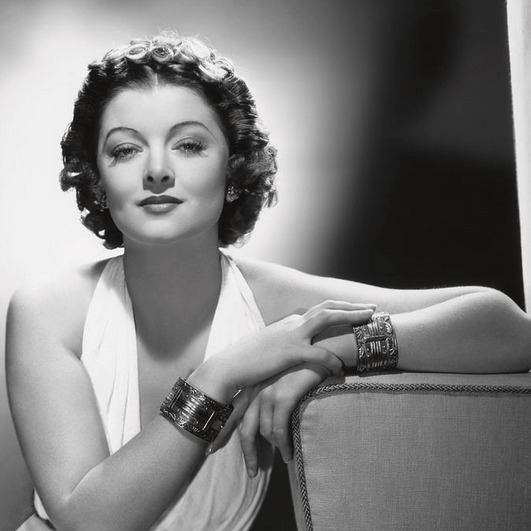
Propaganda
Françoise Rosay (Carnival in Flanders, Jenny, The Halfway House)— French actress and opera singer. i just think she's really hot!
Myrna Loy (The Thin Man, Manhattan Melodrama, Mr Blandings Builds his Dream House)—Started out a slinky silent screen vamp. Became a screwball lead who had a blast drinking, being married to William Powell, solving mysteries, and taking her dog everywhere in the Thin Man Movies. Broke our hearts in The Best Years of Our Lives and played a string of dream wives. Remained hot the entire time. Decades of hotness.
This is round 2 of the tournament. All other polls in this bracket can be found here. Please reblog with further support of your beloved hot sexy vintage woman.
[additional propaganda submitted under the cut.]
Françoise Rosay:

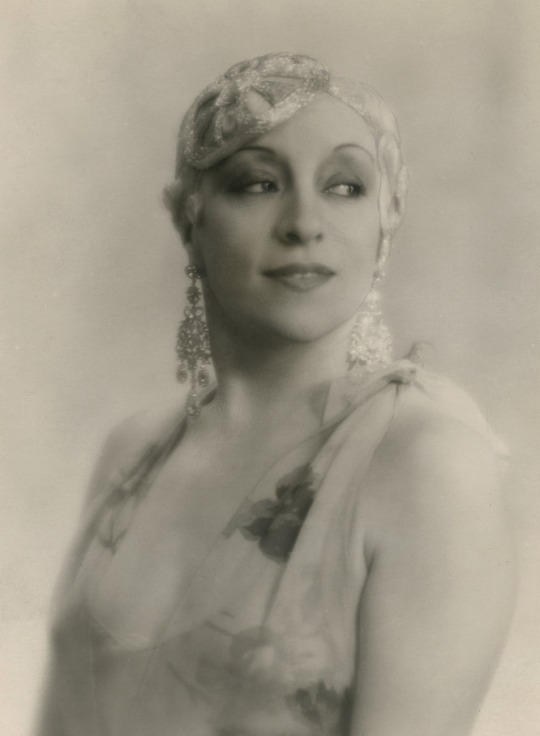
Myrna Loy:

Myrna Loy excelled at playing coy women, so common in screwball comedies in the 40s. She batted her lashes, and shrugged with grace, and made her costars look like foolish heels next to her. She charmed with sneaky elegance, well-placed pouting, and repartee. Besides, she was sultry AF.
While Myrna certainly looked hot in some her earlier vampy exotic bad girl roles, I think shes hottest when her comedic chops got to be displayed. Her dry wit, comedic timing, and subtle facial expressions make her the queen of deadpan snark.
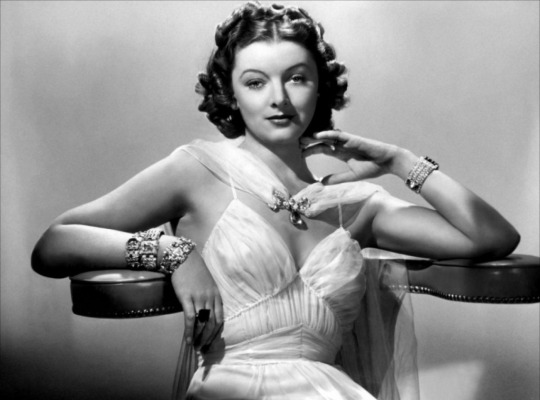
She's just very Mother
So beautiful and popular she was crowned Queen of the Movies in 1936, Myrna Loy was also an amazing actress. She's best remembered for The Thin Man and sequels, where she gets to show off her comedy skills, adding irresistible impish charm to her classic beauty and dancer's figure.
THE SASS
One of the few actresses who managed to successfully transition from silent to talkies, never won an Oscar but was at one time the highest paid woman in Hollywood. Advocated for better roles and pay for Black actors in the 1930s, so passionately anti-Nazi in the 40s she made Hitler's blacklist, spoke out against Joseph McCarthy during the Red Scare, and advocated for fair housing in the 1950s and 1960s, all while being hot as fuck opposite William Powell, Clark Gable, Cary Grant, Spencer Tracy and a whole galaxy of the Hot Vintage Men Poll all-stars.
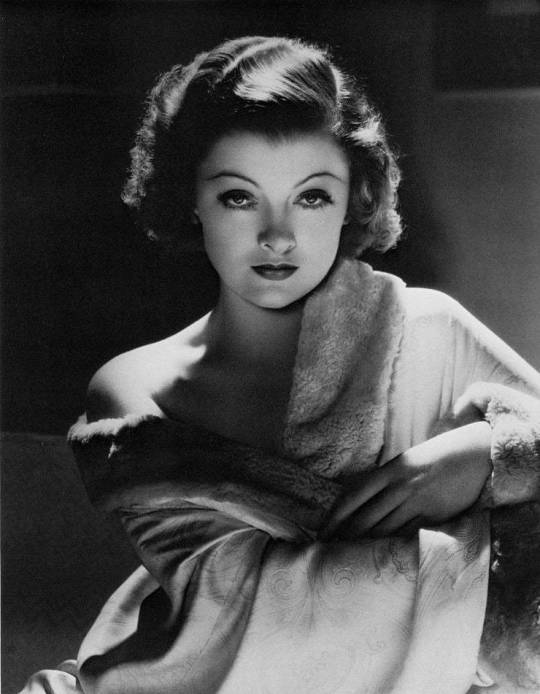
Cute as a button with so much RIZZ! She and whatsisname in The Thin Man are relationship goals.
She was literally called the Queen of Hollywood! She is so sassy and funny in the whole Thin Man series. Absolutely hot in those, and who doesn’t love a woman who can laugh? She had the sultriest gaze and that style! Also before she was a star she sat as the model for an iconic statue for a school (representing “Fountain of Education”).
the glamour!! the banter!! the comedy!!

She's got this cute kinda scrunched up face AND shes funny AND shes got a bangin body.
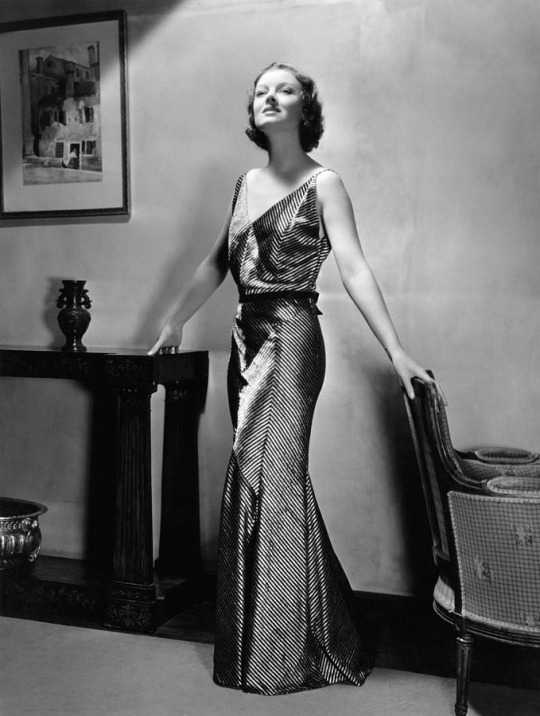
222 notes
·
View notes
Text






Clark Gable, Myrna Loy, and Spencer Tracy star in Victor Fleming’s TEST PILOT, which hit U.S. theaters 85 years ago today. #OnThisDay in 1938
37 notes
·
View notes
Text

Jean Harlow, Clark Gable, and Myrna Loy
#jean harlow#clark gable#myrna loy#golden age of hollywood#classic hollywood#classic movie stars#happy valentine day wishes
26 notes
·
View notes
Photo

#cigarette cards#film stars#gary cooper#clark gable#dolores del rio#lilian harvey#wynne gibson#myrna loy#sari maritza#richard arlen#hollywood
4 notes
·
View notes
Photo


@tcmparty live tweet schedule for the week of Monday, August 13, 2018. Look for us on Twitter…watch and tweet along…remember to add #TCMParty to your tweets so everyone can find them :) All times are Eastern.
Monday, August 13 at 10:00 p.m. THE RAINS CAME (1939) A Hindu doctor's affair with a British noblewoman is disrupted by a violent flood.
Sunday, August 18 at 9:45 p.m. BOOM TOWN (1940) Friends become rivals when they strike it rich in oil.
#schedule#clarence brown#george brent#summer under the stars#myrna loy#tyrone power#brenda joyce#nigel bruce#maria ouspenskaya#joseph schildkraut#mary nash#jane darwell#marjorie rambeau#henry travers#h.b. warner#jack conway#clark gable#claudette colbert#hedy lamarr#spencer tracy#frank morgan#lionel atwill#chill wills
30 notes
·
View notes